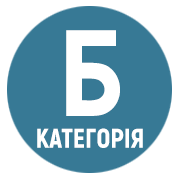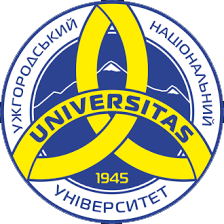PSYCHOLOGICAL ASSISTANCE IN EDUCATIONAL INSTITUTIONS DURING THE WAR: NEEDS, METHODS, ALGORITHMS OF ACTION
DOI:
https://doi.org/10.32782/psy-visnyk/2022.1.28Keywords:
psychosocial assistance, psychological service, emotional disorders, algorithm of psychological assistance, internally displaced persons.Abstract
The article reveals the results of the study of the content and structure of the psychological service of educational institutions during the war in Ukraine against the socio-psychological consequences of the COVID-19 pandemic. The research was conducted using the method of focused interviews and online surveys of practical psychologists educators (224 respondents) of educational institutions of Chernivtsi region, who provided psychological assistance to participants in the educational process and internally displaced persons (IDP). The rating list of inquiries of participants of educational process and IDPs is presented, among which: emotional disorders (tension, anxiety, fear, anger, aggression), fatigue and exhaustion; restoration of a sense of control; fear sirens; assistance in adapting to new living conditions; how to tell children about the war and more. The main methods of psychological assistance, crisis intervention and recovery of resources, which were most often used by specialists to stabilize the psycho-emotional state and prevent the formation of posttraumatic stress disorder, are also presented, including: breathing practices; techniques and neuromuscular relaxation; art-therapeutic practices and game therapy. Some psychologists (15%) used Basic-Ph technology, Assyst acute stress stabilization protocols and CBT technology. According to the results of the study, the "Algorithm of activity of a psychological service worker in wartime" was formed in the first months of the war: 1 – providing emergency (first) psychological assistance (safety); 2 – normalization of the body, psycho-emotional stabilization (body-oriented and breathing practices, cognitivebehavioral methods, EFT, EMDR, Assyst etc.); 3 – diagnostics (if needed); 4 – psychoeducation of self-help methods; 5 – work with emotions, feelings (art methods, Assyst, EFT, CBT, program « Children and war» etc.); 6 – involvement in activities, routine (training, clubs, support groups etc.); 7 – restoration of the resource sphere (Basic-Ph, art-therapy, art classes “Tree of Life”, visualization, relaxation, meditation, program « Safe space » etc.); 8 – ordering past-present-future, if needed work with losses (grief).
References
Правила безпеки та можливості отримання допомоги у період конфлікту в Україні: метод.рек. К.: Агентсво «Україна». 2014. 48 с.
Соціально-педагогічна та психологічна робота з дітьми у конфліктний та постконфліктний період: метод.рек. / Бочкор Н. П. та ін.; за ред В. Г. Панка, К.Б. Левченко. Київ: МЖПЦ «Ла Страда-Україна», 2014. 84 с.
Романовська Д.Д., Швачій Р.А. Соціально-психологічні аспекти пандемії COVID-19: стратегії психологічної допомоги у закладах освіти. Габітус. Науковий журнал з соціології та психології. № 21, 2021. С. 195-200. DOI https://doi. org/10.32843/2663- 5208.2021.21.34.
Завершення навчального року у Чернівецькій області в умовах воєнного стану. Чернівецька обласна державна адміністрація: фейсбук-сторінка. URL: https://fb.watch/deXITBgmfK/ (дата звернення: 25.05.2022).







